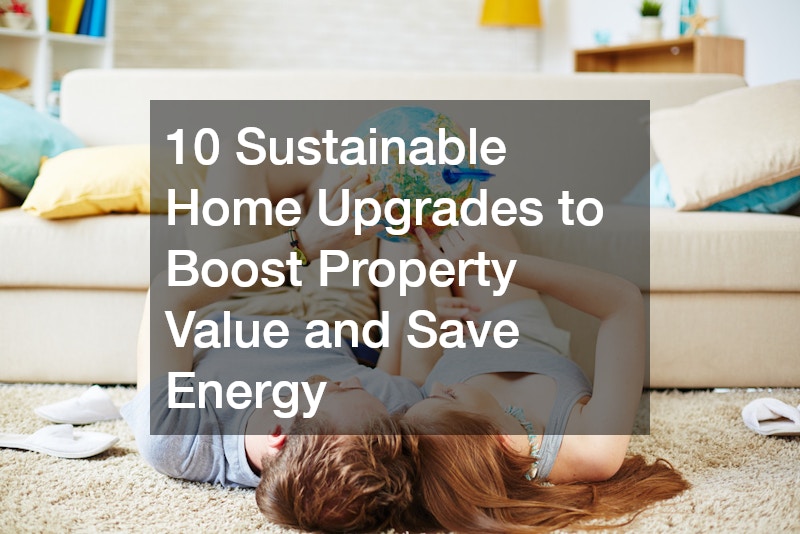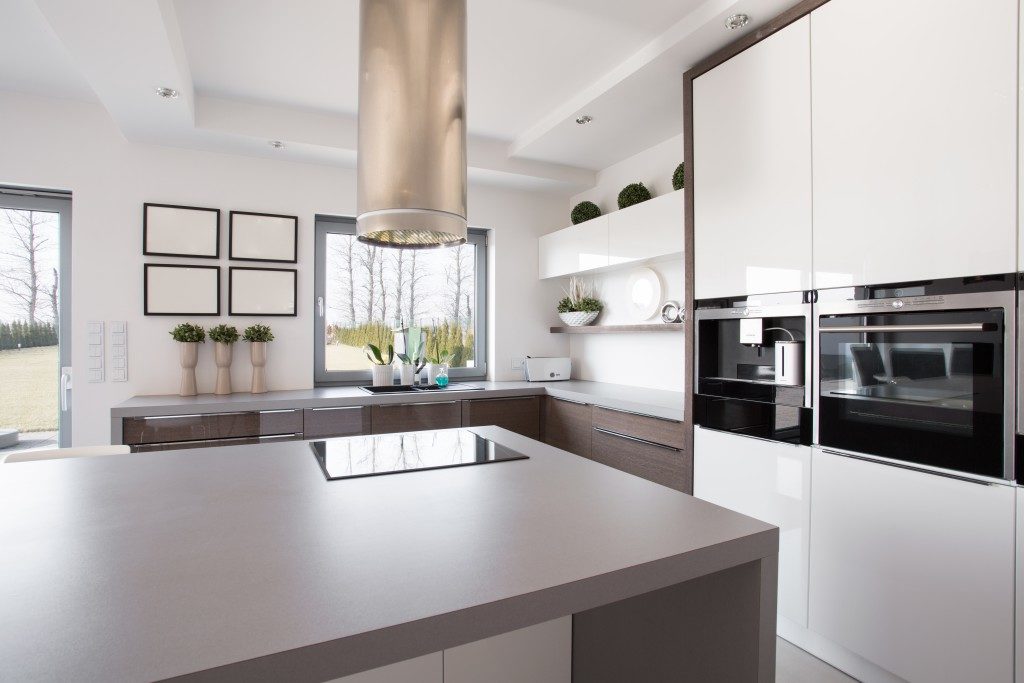Sustainability has evolved from a niche consideration to a major selling point in the real estate market. Homebuyers today are increasingly prioritizing energy efficiency, eco-friendly materials, and sustainable features when choosing properties. According to recent studies, homes with green certifications or energy-efficient upgrades sell faster and at higher prices than those without. This trend reflects a growing awareness of environmental impact and the long-term financial benefits of sustainable living.
The Financial Side of Sustainability
Sustainable homes not only appeal to environmentally conscious buyers but also offer substantial cost savings. Energy-efficient upgrades, such as better insulation or solar panels, can reduce utility bills by hundreds—or even thousands—of dollars annually. For example:
- Upgrading to energy-efficient windows can cut heating and cooling costs by up to 30%.
- A high-efficiency furnace paired with proper insulation can save 15-20% on heating expenses each year.
While some sustainable upgrades require upfront investments, the long-term savings often outweigh the initial costs. Additionally, tax credits, rebates, and incentives are frequently available for eco-friendly improvements, making these upgrades even more affordable.
For homeowners, these improvements offer a dual benefit: reducing day-to-day costs while increasing property value. As sustainability continues to rise in importance among buyers, making eco-friendly upgrades isn’t just good for the planet—it’s a smart financial decision.
Let’s dive into 10 sustainable upgrades that can help you achieve these goals.
- 1. Install Energy-Efficient Windows
- 2. Upgrade Your HVAC System
- 3. Opt for Sustainable Roofing Solutions
- 4. Enhance Your Lawn with Eco-Friendly Practices
- 5. Improve Plumbing Efficiency
- 6. Upgrade Your Furnace
- 7. Prioritize Tree Care for Shade and Energy Savings
- 8. Use Sustainable Concrete for Outdoor Spaces
- 9. Improve Insulation and Air Sealing
- 10. Install Renewable Energy Solutions
1. Install Energy-Efficient Windows
Windows are one of the most significant contributors to a home’s energy performance. Studies estimate that inefficient windows can account for up to 25-30% of residential heating and cooling energy use. This inefficiency not only increases utility bills but also makes maintaining a comfortable indoor environment more challenging. Upgrading to energy-efficient windows is a sustainable solution that can drastically improve your home’s insulation, reduce energy waste, and add modern appeal.
Why Energy-Efficient Windows Matter
Older windows often lack the necessary insulation to keep your home comfortable year-round. During the winter, heat escapes through poorly sealed or single-pane windows, forcing your heating system to work harder. In the summer, those same windows allow excessive heat to enter, increasing the workload of your air conditioning.
Energy-efficient windows are designed to combat these issues by minimizing heat transfer. They help maintain a consistent indoor temperature, which reduces your reliance on heating and cooling systems. This leads to:
- Lower utility bills.
- Reduced carbon emissions.
- Enhanced comfort throughout the year.
Additionally, energy-efficient windows can reduce external noise, improve indoor air quality by reducing drafts, and protect your furniture and flooring from UV damage.
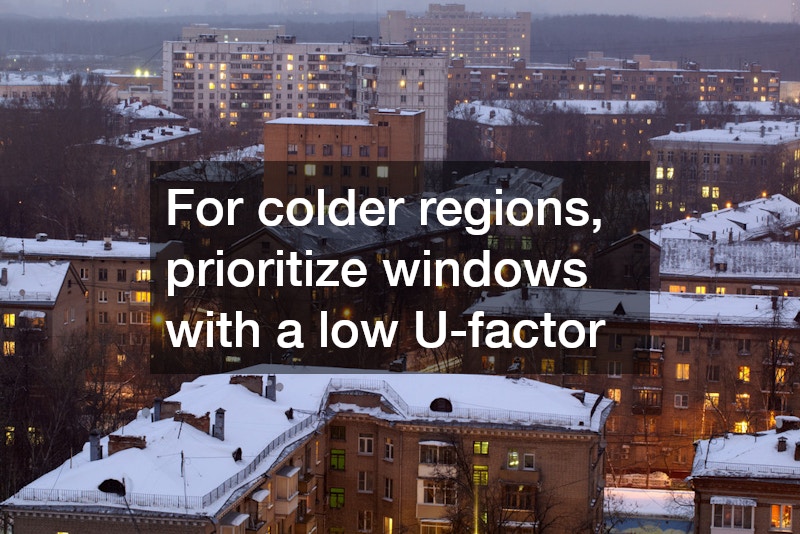
Steps to Implement
- Assess Your Current Windows
- Contact local window replacement companies to inspect your existing windows. Professionals can use tools like thermal imaging cameras to pinpoint areas where energy loss is occurring.
- Look for signs of inefficiency, such as drafts, condensation between panes, or difficulty maintaining indoor temperatures.
- Choose the Right Energy-Efficient Windows
- Opt for Energy Star-rated windows, as these meet rigorous performance standards set by the U.S. Department of Energy.
- Consider windows with double or triple panes. These feature layers of glass separated by insulating gas (like argon or krypton) that reduce heat transfer.
- Select low-emissivity (Low-E) coatings that reflect infrared heat while allowing visible light to pass through. These coatings also block harmful UV rays, preventing furniture and flooring from fading.
- Match your window choice to your climate. For colder regions, prioritize windows with a low U-factor (measuring heat loss). In warmer areas, choose windows with a low Solar Heat Gain Coefficient (SHGC), which blocks heat from the sun.
- Install UV-Blocking Coatings or Films
- In addition to efficient windows, UV-blocking films can be applied to further reduce heat from sunlight and enhance indoor comfort. These films are cost-effective and can be added to existing windows.
- Consider decorative films for added privacy or design elements.
- Hire a Professional Installer
- Proper installation is critical to the performance of energy-efficient windows. Poor installation can lead to air leaks and negate the benefits of your investment. Ensure the window replacement company you choose has experience with energy-efficient products and guarantees their work.
Additional Considerations
- Frame Materials: Look for frames made of insulated vinyl, fiberglass, or wood composites. These materials enhance the overall efficiency of the window.
- Maintenance: Regularly clean windows and inspect seals for wear and tear to maintain their efficiency over time.
- Cost and Savings: While the upfront cost of energy-efficient windows may be higher, homeowners typically recoup their investment through lower energy bills and increased property value. On average, window upgrades provide a return on investment (ROI) of 70-80% during resale.
Pro Tip
Installing energy-efficient windows doesn’t just benefit your wallet—it can significantly boost your home’s marketability. Modern, eco-friendly windows are a sought-after feature among buyers, making your property stand out in a competitive market. By combining energy savings with aesthetic improvements, you’re creating a home that’s both sustainable and appealing.
2. Upgrade Your HVAC System
Heating and cooling systems are some of the largest energy consumers in most homes. Upgrading your HVAC system can drastically cut energy usage while improving indoor comfort.
Steps to Implement:
- Schedule routine maintenance with a heating and air service provider. They can ensure your system is functioning efficiently and identify parts that need repairs.
- Consider replacing outdated HVAC systems with modern, high-efficiency models such as heat pumps or variable-speed systems. These units adapt to your home’s needs and reduce energy waste.
- Pair your system upgrade with a smart thermostat, which allows you to program heating and cooling schedules based on your lifestyle.
Pro Tip: Regular maintenance and upgrades extend the life of your HVAC system and improve indoor air quality, especially if you pair them with periodic air filter replacements.
3. Opt for Sustainable Roofing Solutions
Your roof is a critical barrier against the elements, and upgrading it with sustainable materials can improve energy efficiency while increasing durability.
Steps to Implement:
- Reach out to local roofing contractors to explore eco-friendly options such as cool roofs, metal roofs, or solar shingles. Cool roofs reflect sunlight and reduce heat absorption, keeping your home cooler.
- If a full replacement isn’t necessary, add an insulation layer beneath the roof to prevent energy loss.
- For homes in sunny climates, solar shingles combine the benefits of roofing and renewable energy production.
Pro Tip: A sustainable roof not only saves energy but also enhances your home’s curb appeal and resilience to extreme weather, a factor many buyers value.
4. Enhance Your Lawn with Eco-Friendly Practices
A well-maintained lawn adds significant curb appeal and can be a key element of sustainable landscaping. Opting for eco-friendly practices ensures a beautiful outdoor space that conserves water and supports biodiversity.
Steps to Implement:
- Collaborate with a lawn care service to keep your yard healthy and thriving. Services like aeration, soil testing, and organic fertilization can improve the overall sustainability of your lawn.
- Use hydroseeding to plant grass efficiently and reduce soil erosion. This technique is cost-effective, requires less water than traditional seeding, and promotes rapid growth.
- Incorporate native plants, which are better adapted to local conditions and require less maintenance.
Pro Tip: Reduce irrigation needs by installing a rainwater harvesting system to water your lawn.
5. Improve Plumbing Efficiency
Steps to Implement
- Install Low-Flow Fixtures
- Work with a local plumbing company to replace standard faucets, showerheads, and toilets with low-flow alternatives.
- Low-Flow Showerheads: These use as little as 1.5 gallons per minute (GPM), compared to older models that consume up to 5 GPM. Despite the lower flow, they maintain strong water pressure thanks to modern aeration technology.
- Low-Flow Faucets: These can reduce water usage by up to 50% in sinks without affecting performance, saving water during handwashing and dishwashing.
- Dual-Flush Toilets: These toilets feature two flush options—one for liquid waste and another for solid waste—reducing water use by up to 67% compared to older, single-flush models.
Tip: Check for fixtures labeled with the EPA’s WaterSense certification, which guarantees water efficiency and performance.
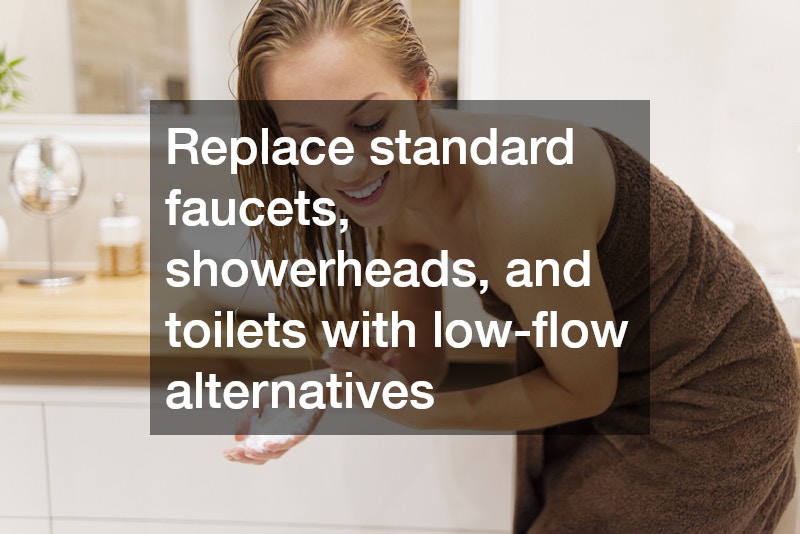
- Fix Leaks in Your Plumbing System
- A single leaky faucet can waste over 3,000 gallons of water annually, and toilet leaks can waste even more.
- Hire a local plumbing company to conduct a thorough inspection of your plumbing system. Focus on common problem areas like faucets, showerheads, toilets, and hidden pipe connections.
- Use leak detection tools, such as dye tablets for toilets or smart water monitors, to catch silent leaks that may go unnoticed.
- Upgrade to an Energy-Efficient Water Heater
- Tankless Water Heaters: These systems heat water on demand, eliminating the need to keep a tank of water heated at all times. This upgrade can save both energy and water by reducing the wait time for hot water at the tap.
- Solar-Powered Water Heaters: For an even more sustainable solution, consider installing a solar water heater. These systems use renewable energy from the sun to provide hot water, significantly reducing your household’s reliance on fossil fuels.
- Pair your water heater upgrade with insulated pipes to minimize heat loss and further improve efficiency.
- Consider a Greywater Recycling System
- Greywater systems collect and filter wastewater from sinks, showers, and washing machines for reuse in irrigation or flushing toilets.
- This setup can reduce household water consumption by 25-40%, depending on the size of your home and the number of greywater applications.
- Work with a plumbing professional to design a system that complies with local regulations and is tailored to your property.
Example Use: Redirect water from your bathroom sinks and showers to irrigate your garden or lawn, reducing your reliance on municipal water supplies.
Additional Considerations
- Smart Plumbing Fixtures: Explore smart faucets or showerheads with motion sensors or timers, which encourage mindful water use.
- Rainwater Harvesting: Install a rain barrel or underground cistern to collect and reuse rainwater for landscaping and cleaning purposes.
- Maintenance: Regularly inspect and maintain plumbing fixtures to ensure they continue operating efficiently. Even minor issues, like mineral buildup in low-flow fixtures, can affect performance over time.
Pro Tip
If you’re serious about sustainability, a greywater recycling system can revolutionize how your home uses water. Not only does it significantly reduce your water footprint, but it also creates a closed-loop system that supports a lush, thriving garden or lawn without extra costs. Consult your local plumbing company to evaluate your home’s suitability for greywater use and explore options tailored to your needs.
6. Upgrade Your Furnace
Heating accounts for a significant portion of energy consumption in colder climates. A more efficient furnace can drastically cut costs and emissions.
Steps to Implement:
- Schedule regular inspections and tune-ups with a furnace service professional to ensure your unit is running efficiently.
- Replace older furnaces with high-efficiency models that have a higher Annual Fuel Utilization Efficiency (AFUE) rating. Look for systems that integrate with your thermostat for optimal performance.
- Improve your home’s insulation to complement your furnace upgrade, as this will help retain heat.
Pro Tip: Set up zone heating to avoid warming unused areas of your home, which saves energy and money.
7. Prioritize Tree Care for Shade and Energy Savings
Trees do more than beautify your property—they also reduce energy costs by providing shade and lowering temperatures around your home.
Steps to Implement:
- Partner with a tree trimming company to maintain the health of your trees and ensure they are positioned to provide maximum shade during the summer.
- Plant deciduous trees strategically around your property. These trees provide shade in summer and allow sunlight to warm your home in winter after their leaves fall.
- Remove invasive species or dead trees that may pose risks to your home or the local ecosystem.
Pro Tip: Healthy, well-placed trees can increase your property’s value by up to 15%, making them a worthwhile investment.
8. Use Sustainable Concrete for Outdoor Spaces
Concrete is a versatile material for driveways, patios, and walkways, but traditional concrete production has a high environmental impact. Opting for sustainable alternatives can reduce your carbon footprint.
Steps to Implement:
- Work with concrete companies to install permeable pavements, which allow water to pass through and reduce runoff.
- Use recycled concrete or low-carbon concrete mixes that incorporate fly ash or slag. These materials reduce the environmental impact of production.
- Consider decorative or stamped concrete to add aesthetic appeal to outdoor spaces.
Pro Tip: Sustainable concrete options often last longer and require less maintenance, adding value to your home.
9. Improve Insulation and Air Sealing
Proper insulation is one of the most effective ways to maintain a comfortable home temperature while reducing energy consumption. Poor insulation allows warm air to escape during the winter and hot air to infiltrate during the summer, forcing heating and cooling systems to work harder. This not only drives up energy costs but also places unnecessary strain on your HVAC system, shortening its lifespan. By improving your home’s insulation, you can create a more energy-efficient, sustainable living space that saves money and enhances comfort.
Why Insulation Matters
- Energy Efficiency: Insulation reduces heat transfer, helping your home retain warmth in winter and stay cool in summer. This decreases reliance on heating and cooling systems, lowering energy bills.
- Environmental Benefits: Reducing energy consumption also reduces greenhouse gas emissions, making insulation upgrades a key component of sustainable living.
- Comfort: Proper insulation eliminates drafts and uneven temperatures, ensuring a consistent indoor climate throughout your home.
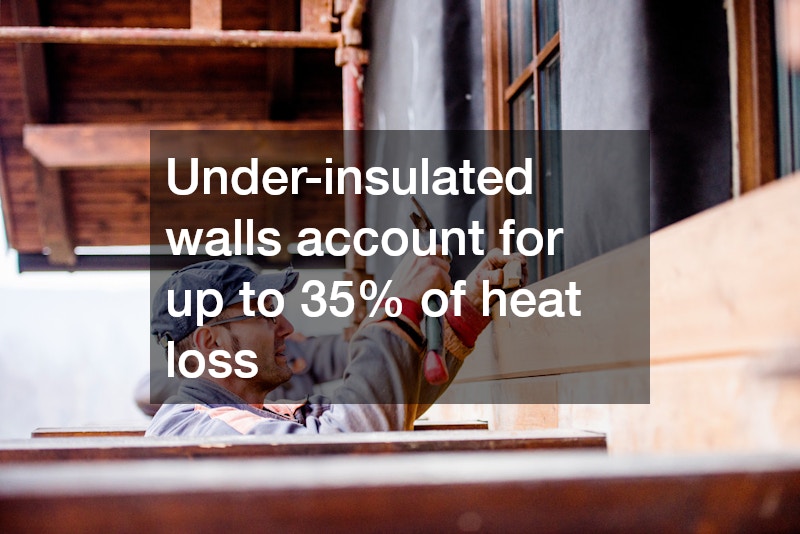
Steps to Implement
- Identify and Seal Air Leaks
- Even the best insulation can’t perform effectively if your home has air leaks. Common areas for leaks include doors, windows, ducts, and attics.
- Use weatherstripping to seal gaps around doors and windows. This is a quick and inexpensive fix that can immediately improve energy efficiency.
- Apply caulking around window frames, baseboards, and any small cracks or gaps in the building envelope.
- Check your ductwork for leaks or poor connections. Seal these with foil-backed tape or duct mastic to prevent conditioned air from escaping.
- Air ducts full of dust buildup also become less efficient, placing more of a strain on your heating or cooling. Schedule regular air duct cleaning to make sure your air ducts are clear.
Tip: Test for air leaks with a simple candle test. Hold a lit candle near potential leak areas on a windy day. If the flame flickers, you’ve found a draft that needs sealing.
- Upgrade Insulation in Key Areas
- Attic: Heat rises, making the attic one of the most important areas to insulate. Use materials like cellulose, fiberglass, or spray foam to achieve an R-value suitable for your climate zone.
- Walls: Uninsulated or under-insulated walls can account for up to 35% of heat loss in a home. Blow-in cellulose or rigid foam insulation can be added without significant remodeling.
- Basement and Crawl Spaces: These areas often get overlooked but can contribute significantly to heat loss. Insulate foundation walls and floors with rigid foam or spray foam insulation to prevent drafts and moisture issues.
Eco-Friendly Options:
- Cellulose Insulation: Made from recycled paper, this is an affordable and sustainable choice.
- Sheep’s Wool: A natural, renewable material that offers excellent thermal and sound insulation.
- Cork or Denim Insulation: Non-toxic options that repurpose materials for sustainable use.
- Schedule an Energy Audit
- An energy audit provides a comprehensive evaluation of your home’s energy efficiency. A professional auditor will use tools like blower doors and infrared cameras to identify problem areas.
- Audits can pinpoint where insulation is inadequate, where air leaks exist, and how your home’s overall energy performance can be improved.
- Use the audit results to prioritize your insulation upgrades and allocate your budget effectively.
Cost vs. Savings
While insulation upgrades require an upfront investment, the long-term savings can be substantial. For instance:
- Adding insulation to an attic can save 10-15% on annual heating and cooling costs.
- Sealing leaks and insulating ductwork can improve HVAC efficiency by up to 20%.
- Homes with proper insulation often experience fewer system breakdowns, reducing maintenance and repair costs over time.
Many states and utility companies offer rebates or tax incentives for insulation improvements, further reducing the cost of these upgrades.
Pro Tip
Insulation works best when paired with other energy-efficient upgrades. If you’ve recently installed a new HVAC system or scheduled furnace service, improved insulation can help these systems perform at their peak efficiency. The combination of insulation and HVAC optimization ensures that your home stays comfortable while using minimal energy, maximizing savings.
10. Install Renewable Energy Solutions
Renewable energy systems, such as solar panels, are among the most impactful upgrades for sustainability and property value.
Steps to Implement:
- Research local incentives and tax credits for renewable energy installations. Many areas offer substantial rebates for solar systems.
- Work with certified installers to add rooftop solar panels. For smaller homes, consider solar-powered water heaters or exterior lighting systems.
- Combine renewable energy with battery storage to ensure energy availability during outages.
Pro Tip: Solar installations can pay for themselves over time through reduced utility bills and increased resale value.
Conclusion
Sustainable home upgrades not only make your home more energy-efficient but also enhance its market value and contribute to a greener future. From modernizing your windows to upgrading HVAC systems and embracing renewable energy, these actionable steps provide both immediate and long-term benefits. By leveraging the expertise of professionals such as tree trimming companies, local plumbing companies, and concrete companies, you can seamlessly incorporate these improvements into your home. Take the first step today and enjoy a sustainable, energy-efficient lifestyle that pays off for years to come.

